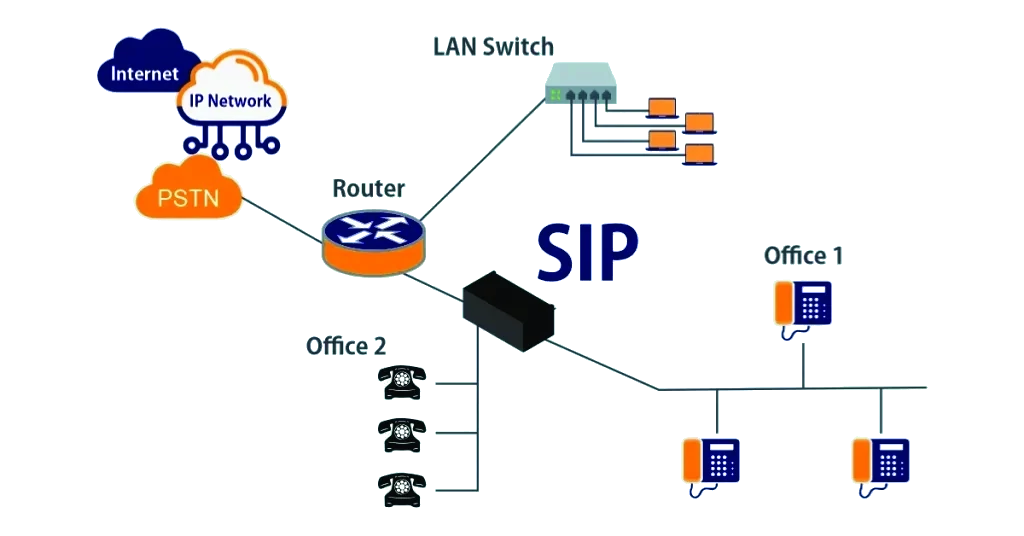Looking to turn every customer call into a success story? Your inbound call center software could be the game-changer.
Inbound call centers are more than just a support line—they’re the front line of your brand. In today’s ultra-competitive landscape, where a single poor experience can send customers to a competitor, delivering fast, reliable, and personalized service is non-negotiable. That’s where modern inbound call center software steps in.
From reducing wait times to empowering agents with real-time insights, the right software solution doesn’t just handle calls—it builds loyalty, drives growth, and keeps your business one step ahead.
This guide reveals the top 10 must-have features your inbound call center software should include to help you optimize performance, delight customers, and future-proof your support operations. Whether you’re a startup scaling fast or an enterprise looking to modernize, these features are essential for success.
Why Choosing the Right Inbound Call Center Software Matters
Not all call center software is created equal. Many businesses make the mistake of investing in outdated systems that can’t scale or adapt to evolving customer expectations. Modern consumers demand more than just a voice on the other end of the line—they expect fast resolutions, personalized interactions, and the ability to communicate across multiple channels. The right inbound call center software provides the infrastructure to deliver all of this and more, ensuring your support team can respond effectively and consistently, no matter the volume or complexity of the calls.
What to Expect From This Guide
In this blog, we’re not just listing features—we’re showing you why they matter and how they improve your customer service outcomes. From intelligent call routing and CRM integration to real-time analytics and cloud-based flexibility, each feature plays a strategic role in elevating your customer experience. If you’re serious about optimizing your support operations, reducing churn, and building a customer-first brand, these ten features will give your team the tools to excel—today and tomorrow.
Here, we explore the top 10 must-have features in inbound call center software.
1. Omnichannel Support
Omnichannel support is one of the most essential features of inbound call center software. This feature allows businesses to communicate with customers through various channels, including phone calls, emails, live chat, social media, and SMS, all within the same platform. By integrating these channels, call centers can ensure seamless communication, providing customers with consistent support no matter how they engage with the company.
In today’s fast-paced world, customers expect flexibility. Omnichannel contact center support meets this demand by allowing customers to reach out via their preferred communication channel. It also allows agents to view all previous interactions, making it easier to resolve customer issues efficiently, even if the conversation moves across multiple channels.
In addition to enhancing the customer experience, omnichannel support improves internal operations by eliminating silos between departments. When support agents can see a unified view of customer activity across platforms, it reduces miscommunication, accelerates problem resolution, and increases first-contact resolution rates. Furthermore, it allows managers to track customer journeys, identify bottlenecks, and fine-tune their support strategy. For businesses aiming to build long-term customer relationships, an omnichannel approach demonstrates commitment to accessibility, responsiveness, and personalized service—key factors in customer loyalty and brand advocacy.
2. Interactive Voice Response (IVR)
Interactive Voice Response (IVR) is a critical inbound call center software feature. It enables automated responses to customer calls, directing them to the correct department or agent based on their responses. IVR systems can handle high volumes of calls, reducing wait times and ensuring that customers reach the correct person quickly.
Moreover, IVR systems can integrate self-service features, allowing customers to resolve basic issues such as checking account balances or retrieving order statuses without human assistance. This not only improves efficiency but also empowers customers, reducing their dependency on agents and lowering operational costs for businesses.
Modern IVR systems go beyond simple routing. With advanced voice recognition and natural language processing, IVR can understand more complex queries and respond in a conversational tone, creating a smoother user experience. Additionally, customizable IVR menus allow businesses to tailor the system to specific operational needs or customer expectations. Data collected through IVR interactions can also be fed into analytics tools to improve call flow design and identify common customer needs. By combining IVR with CRM and call routing, companies can create a powerful, automated front-line defense that enhances customer service while maximizing resource allocation.
3. Call Routing and Queuing
Call routing and queuing capabilities are essential for directing incoming calls to the right agent, ensuring that customers are connected with the appropriate department or specialist. This feature helps manage call traffic efficiently by prioritizing urgent calls or those from VIP customers.
Advanced call routing systems use intelligent algorithms to analyze customer data, such as previous interactions, geographic location, or issue types, ensuring that calls are directed to the most suitable agent. This results in faster resolutions, fewer transfers, and improved customer satisfaction. Call queuing also helps reduce wait times, giving customers a smoother experience.
Furthermore, call routing systems can be customized with time-based, skill-based, and priority-based rules. For example, after-hours calls can be routed to remote teams, or high-value customers can be placed at the front of the queue. Interactive queuing options—such as estimated wait times and call-back features—also enhance user experience by providing flexibility. When well-implemented, intelligent routing reduces customer frustration, improves agent efficiency, and enhances overall contact center performance. It enables businesses to match customer needs with the right expertise at the right time, fostering trust and repeat engagement.
4. CRM Integration
Integrating customer relationship management (CRM) software with inbound call center software is a game-changer for providing personalized service. With CRM integration, agents can access comprehensive customer information, including previous interactions, preferences, and purchase history.
This feature eliminates the need for agents to repeatedly ask customers for the same information, enhancing the overall service quality and reducing call handling times. Furthermore, CRM integration enables agents to offer tailored recommendations and resolve issues more effectively, leading to higher customer satisfaction and retention.
The ability to view a 360-degree customer profile in real time empowers agents to proactively address customer concerns and anticipate future needs. Integration with CRM tools like Salesforce, HubSpot, or Zoho also enables workflow automation—such as ticket creation, follow-ups, and task assignment—without leaving the call center interface. Managers can also use CRM data to segment customers and target specific groups with promotions, feedback surveys, or loyalty programs. In short, CRM integration helps businesses move beyond reactive customer service to a strategic, data-driven approach that builds lasting relationships and boosts revenue.
5. Real-Time Analytics and Reporting
Real-time analytics and reporting are essential for measuring the performance of both agents and the overall call center. This feature allows managers to monitor key performance indicators (KPIs), such as call volume, average handling time, first-call resolution rate, and customer satisfaction scores.
By analyzing real-time data, businesses can identify areas for improvement and make informed decisions to optimize their call center operations. This feature also helps managers monitor agent performance on the fly, make staffing adjustments during peak hours, and assess the overall effectiveness of marketing campaigns and promotional activities.
Real-time dashboards provide visual insights that help leaders quickly spot trends or anomalies. For instance, a sudden spike in call volume could indicate a product issue or website outage that needs immediate attention. Predictive analytics can also forecast call trends based on historical data, allowing for proactive scheduling and resource planning. Moreover, analytics can be used to coach agents, set performance benchmarks, and reward high performers. By converting raw data into actionable insights, real-time reporting transforms a reactive support model into a proactive, agile, and customer-centric operation.
6. Call Monitoring and Coaching
Call monitoring and coaching features enable supervisors to listen to live or recorded calls, ensuring that agents provide quality service. Supervisors can give immediate feedback or coaching to agents during calls, helping them improve their performance and resolve customer issues effectively.
These features play a key role in maintaining high-quality service standards across the board. With call monitoring, businesses can ensure agents adhere to scripts, follow best practices, and stay compliant with company policies. This continuous feedback loop helps agents improve and ensures customers consistently receive the best possible service.
Beyond basic oversight, call monitoring is also a cornerstone for agent development. Supervisors can use silent monitoring, whisper coaching, and barge-in functions to either guide agents during live calls or intervene when necessary. This real-time engagement is crucial for handling sensitive or escalated situations. Over time, recorded calls serve as valuable assets for performance reviews and training sessions, helping new agents learn from real-world examples. Additionally, call monitoring helps maintain consistency in tone, messaging, and compliance—especially in regulated industries like finance and healthcare. When used strategically, monitoring and coaching tools enhance customer trust, agent confidence, and long-term service excellence.
7. Automatic Call Distribution (ACD)
Automatic Call Distribution (ACD) is another essential feature of inbound call center software. It automatically distributes incoming calls to the next available agent based on pre-configured rules or parameters.
ACD systems prioritize calls based on various factors, such as customer priority, agent skillset, and call volume. This ensures that calls are handled efficiently, reducing wait times and preventing agents from becoming overwhelmed. ACD can even direct specific inquiries to specialized agents, improving the accuracy and speed of issue resolution, ultimately enhancing overall call center productivity and customer satisfaction.
ACD systems are often integrated with IVR and CRM tools, enabling a seamless handoff of customer data when a call is routed. This not only minimizes the time customers spend explaining their issue but also helps agents prepare for the interaction in advance. More sophisticated ACD systems support omnichannel distribution, intelligently allocating emails, chats, and social media messages alongside voice calls. Additionally, ACD data provides managers with insights into agent workload and customer demand, allowing for smarter staffing decisions. In short, ACD helps optimize workforce utilization, streamline customer journeys, and support scalable growth for high-volume support operations.
8. Self-Service Options
Today’s customers appreciate the ability to resolve issues on their own. Self-service options, such as automated FAQs, knowledge bases, and chatbots, allow customers to find answers to their questions without the need to speak with an agent. This feature is handy for handling routine inquiries, freeing agents to focus on more complex issues.
Self-service options not only improve customer satisfaction by offering immediate solutions, but they also reduce the workload on agents, enabling them to handle higher-value interactions. Additionally, businesses benefit from lower operational costs by automating routine tasks, increasing overall efficiency.
Modern self-service tools are powered by artificial intelligence and machine learning, enabling them to understand context and continuously improve based on user behavior. Smart chatbots can handle account updates, order tracking, and technical troubleshooting with human-like interactions. Interactive knowledge bases, enhanced with search and suggestion capabilities, empower users to resolve issues quickly. These tools are especially valuable outside normal business hours, offering 24/7 support without additional staffing. By investing in self-service, companies can scale support cost-effectively while delivering convenience and autonomy to customers—key components in building a modern customer experience.
9. Call Recording and Playback
Call recording and playback are essential features for ensuring quality control in an inbound call center. Businesses can review conversations for training, quality assurance, and compliance by recording customer interactions.
Recorded calls provide invaluable insights into agent performance and customer concerns, allowing businesses to identify trends and recurring issues. In case of disputes, recorded calls can serve as a reference to clarify misunderstandings, ensuring fair and accurate resolutions. Moreover, call recordings are beneficial for training purposes, helping new agents learn effective communication techniques and handle complex customer scenarios.
These recordings also support regulatory compliance by ensuring that agents follow required disclosure scripts and data protection practices. Many industries, such as finance, insurance, and healthcare, are legally required to retain call records for a specific duration. Call recording systems often include search, tagging, and annotation tools, enabling managers to easily locate and review relevant segments. Additionally, speech analytics can be applied to identify sentiment, detect keywords, and uncover service gaps. This wealth of data is crucial not just for operational improvements, but for refining products and services based on actual customer feedback.
10. Multilingual Support
Multilingual support in inbound call center software becomes increasingly essential as businesses expand globally. Multilingual support allows companies to assist in multiple languages, helping to cater to a diverse customer base.
This feature enhances the customer experience by ensuring that non-English speaking customers can communicate with agents in their preferred language. It improves accessibility, builds customer trust, and enhances the overall brand experience. Multilingual support also enables businesses to serve international markets effectively, improving customer loyalty and increasing the company’s reach in global markets.
Advanced systems can detect a customer’s preferred language based on IVR input, browser settings, or CRM data, and route them to a native-speaking agent. In cases where live multilingual support is unavailable, AI-powered real-time translation tools can bridge the gap, ensuring smooth communication. This capability reduces miscommunication, accelerates problem resolution, and shows cultural sensitivity—an increasingly important differentiator in competitive markets. Offering support in multiple languages not only enhances customer satisfaction but also gives businesses a strategic edge in tapping into new markets, improving brand reputation, and fostering inclusivity.
Conclusion
Inbound call center software with the proper features is critical for providing high-quality customer service and enhancing operational efficiency. The must-have features summarized in this blog, such as omnichannel support, IVR, CRM integration, and real-time analytics, support companies streamline their inbound call center systems, improve support team productivity, and provide customers personalized, timely service.
Invest in advanced inbound contact center software with these critical call center features, and ‘as a business, ‘ you get the value that every business seeks—improved customer support, stronger relationships, and long-term business development. Powerful cloud-based inbound call software empowers agents to handle questions and queries effectively. It provides the tools for proactive engagement, including contact center solutions and phone number management, leading to higher customer satisfaction and brand loyalty.
Invest now!





